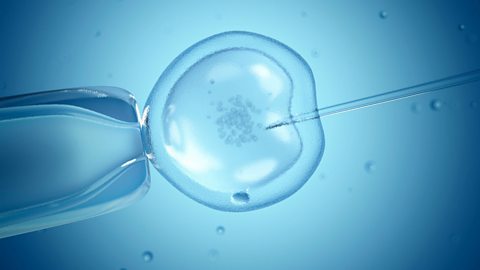Reproductive technologies to treat infertility using hormones - Higher
Assisted Reproductive Technology (ART)
Assisted Reproductive Technology is the use of hormones and procedures, as fertility treatments, to help to achieve pregnancy. These include IVFThe letters stand for 'in vitro fertilisation'. This involves bringing the sperm and the egg together to create an embryo, which is placed into the woman's womb to increase the chance of giving birth. and a fertility drug, clomifeneFertility drug used to stimulate ovulation (egg release)..
Some women have difficulty becoming pregnant because they don't produce enough FSHFollicle Stimulating Hormone. It stimulates oestrogen production and the growth of follicles (egg-sacs) in the ovary. It is secreted by the pituitary gland. to allow their eggs to mature. Some fertility drugs contain FSH and LHLuteinising Hormone, secreted by the pituitary gland, which stimulates ovulation., which stimulate eggs to mature in the ovary.
Fertility treatments increase a woman's chance of becoming pregnant, although the treatment may not always work. On the other hand, because the treatment boosts the production of mature eggs, it increases the chance of twins or triplets. Multiple pregnancies carry a risk of complications, and may lead to premature or underweight babies.
In vitro fertilisation (IVF) treatment

If a couple are having difficulty conceiving a child because there are issues with the quality of the man's sperm, or a woman has blocked oviducts, then IVF can be used.
- IVF involves giving a mother FSH and LH, to stimulate the maturation of several eggs in the ovary
- the eggs are collected from the mother and fertilised by sperm from the father in a dish in the laboratory
- the fertilised eggs develop into embryos
- at the stage when they are tiny balls of cells one or two embryos are inserted into the mother's uterus (womb)
The development of microscopy techniques have allowed IVF treatments to be developed further.
Clomifene
Some women have difficulty becoming pregnant because they do not ovulate (release eggs).
Clomifene is a drug used as a fertility drug to stimulate ovulation, the release of eggs. It works by blocking the action of oestrogen's negative feedback on LH. Therefore more LH is released in a surge. This mimics the LH surge which occurs just before ovulation.